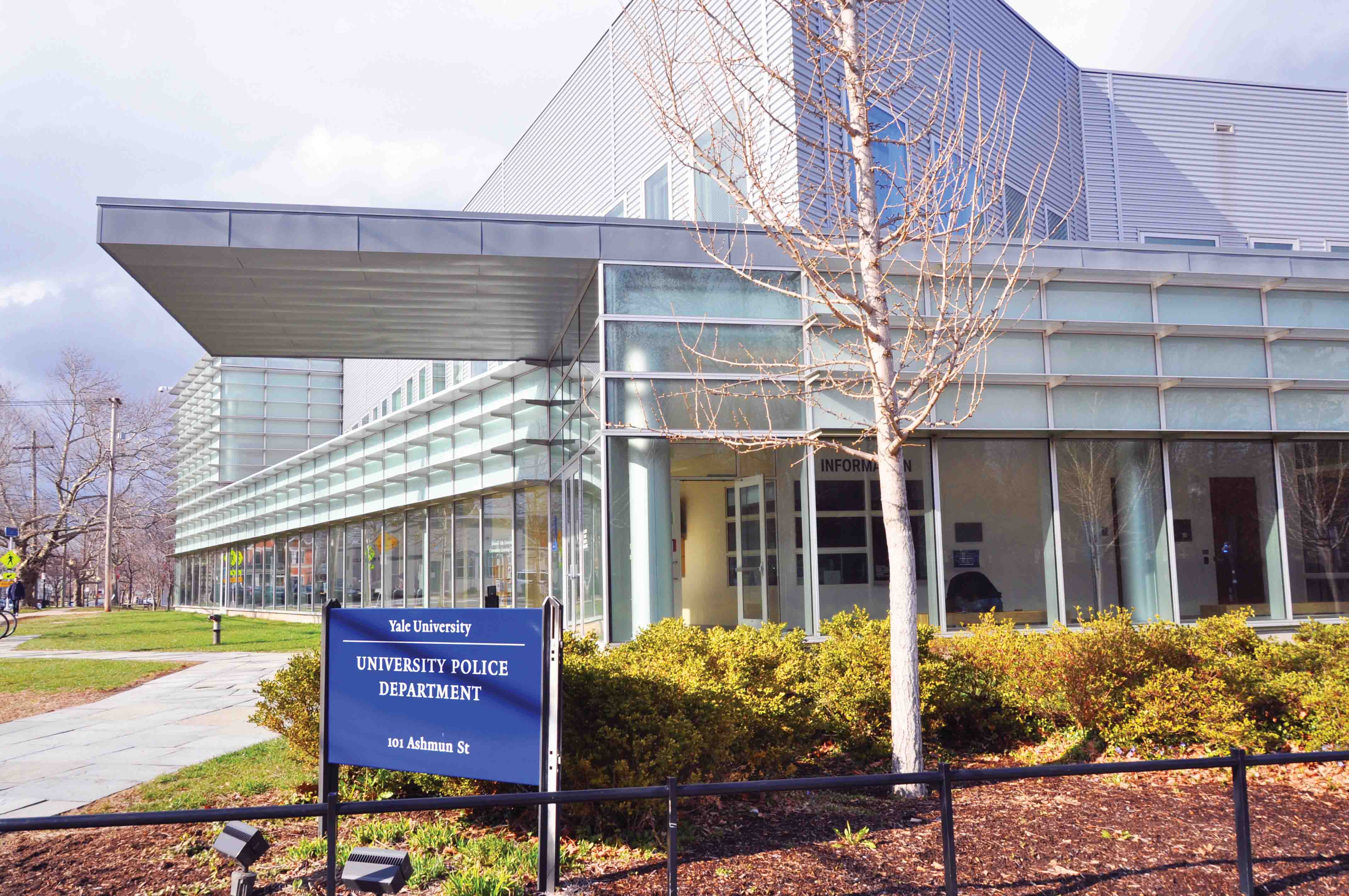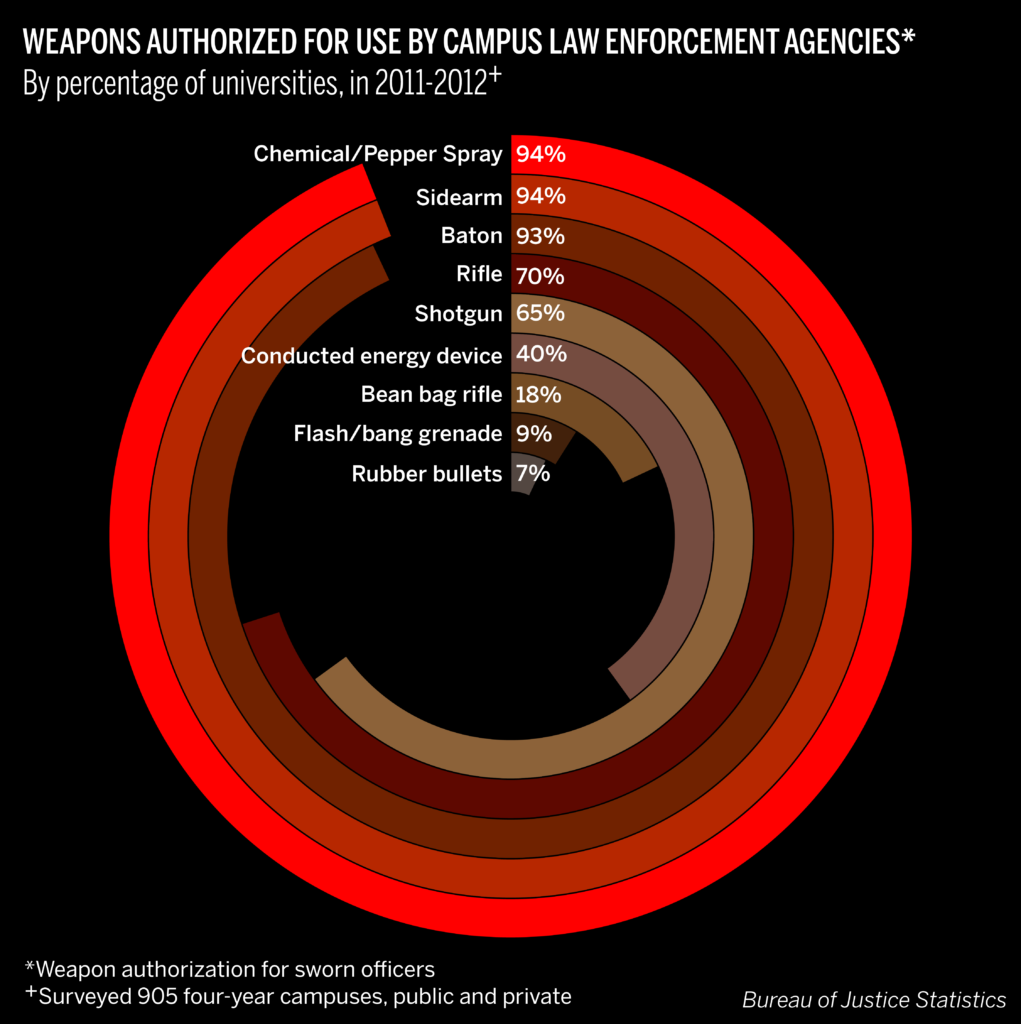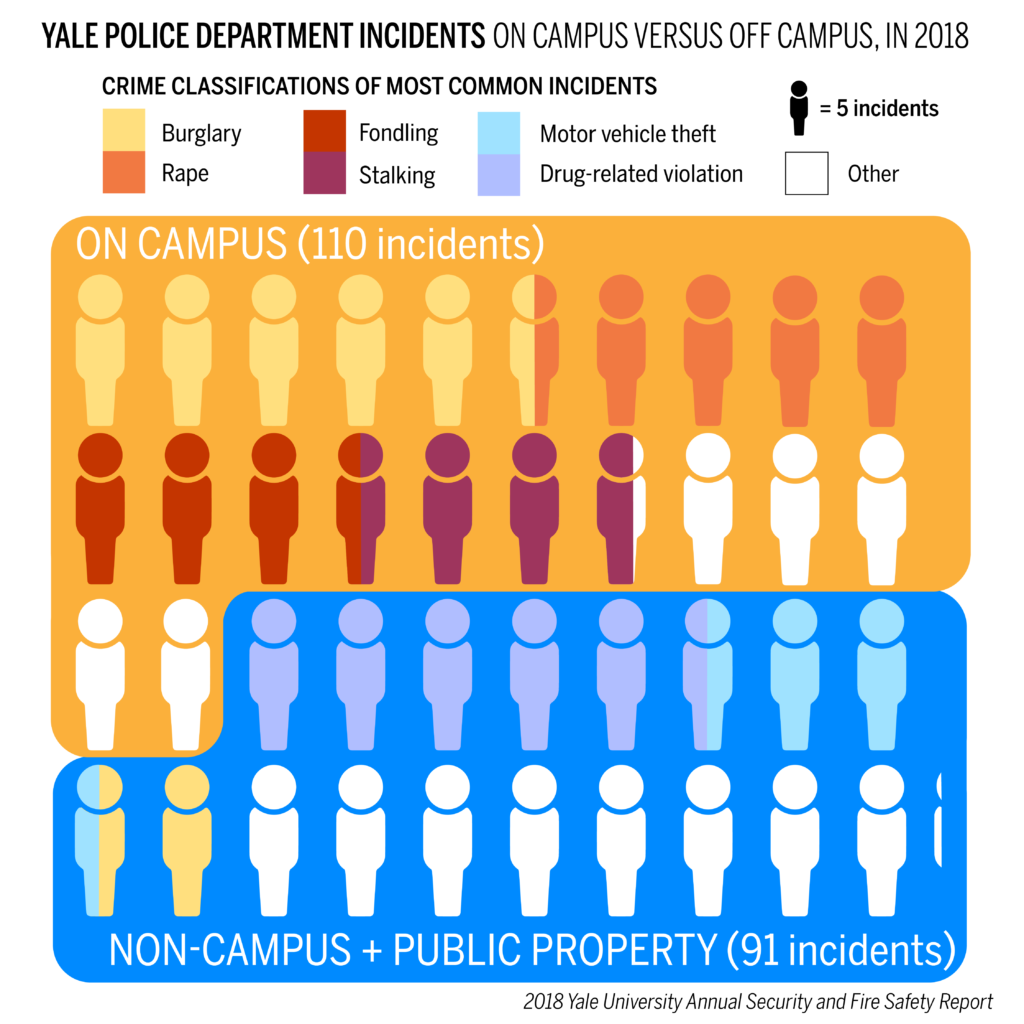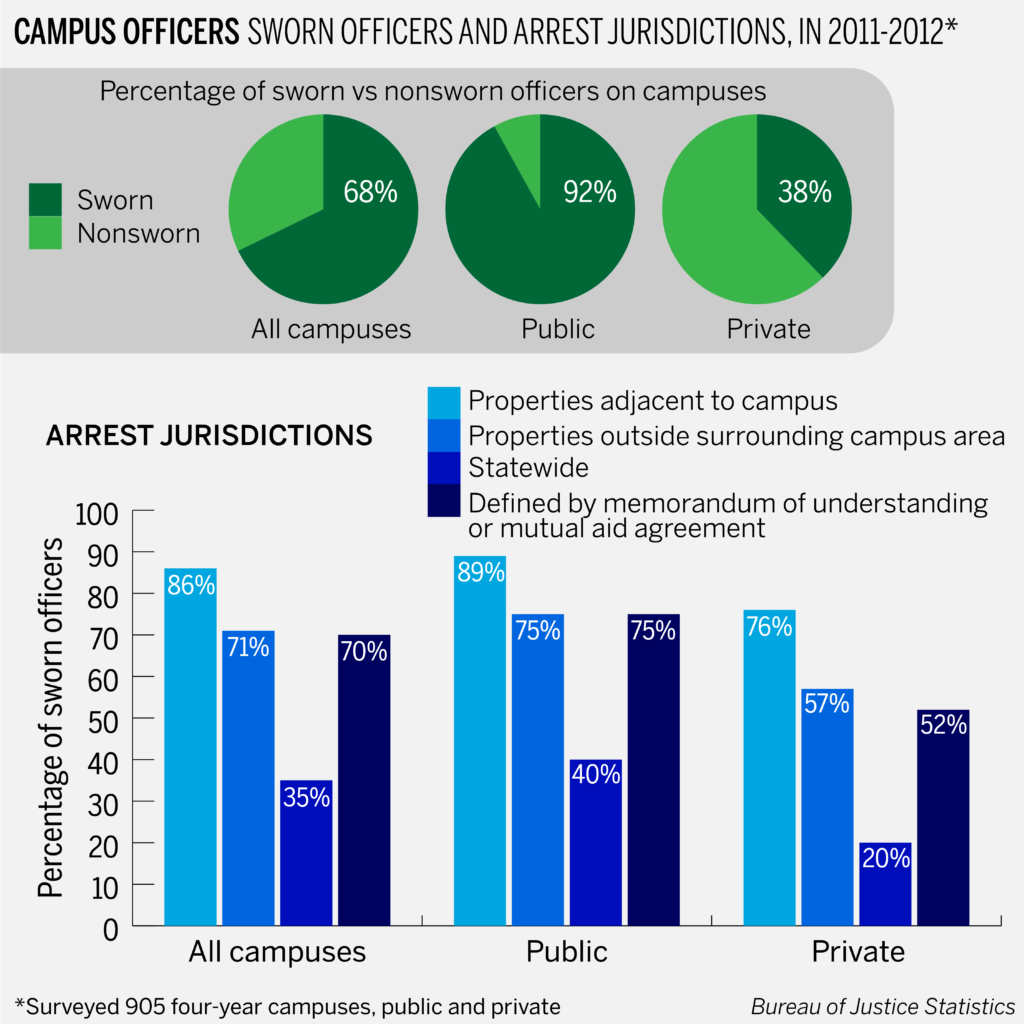
Madelyn Kumar
As protests against police brutality sweep across the nation, students and activists are calling on the University to defund and dismantle the Yale Police Department — the oldest collegiate police force in the United States.
Yale established the first college police department in 1894, setting the precedent for hundreds of campuses nationwide to create their own. Amid protests to end police violence, however, Black Students for Disarmament at Yale and the Yale Undergraduate Prison Project are requesting that the University cut funding for the YPD and redirect the money to New Haven community initiatives. BSDY’s “Defund and Dismantle YPD” petition — which argues that the YPD does not perform a necessary function and cites multiple instances of the department acting against Black community members — has garnered over 4,500 signatures as of Saturday morning. The group is also organizing a protest on the New Haven Green for Saturday afternoon.
“Yale University already has Yale Security patrolling campus, offering escorts and safe rides to students, and overseeing the blue phones and card reader systems,” the petition reads. “Very bluntly, why does the YPD exist? The organization has the same goals as Yale Security, the same power as the New Haven Police Department, but, most importantly, none of their accountability or oversight.”
The Yale Police Department is said to have originated after Yale medical students were suspected of stealing cadavers from a New Haven graveyard, causing violence between students and city residents. This prompted two New Haven Police Department officers to volunteer as officers exclusively assigned to Yale’s campus. 126 years later, the YPD has swelled into a force of 93 officers with two assistant chiefs — including a patrol unit, an emergency services unit, and an investigative unit.
According to the Bureau of Justice, about 75 percent of all U.S. college campuses used armed officers in 2011–2012. Nearly all college campuses — a sheer 94 percent — authorized officers to carry sidearms and chemical or pepper spray.

“From my experience being the New Haven police chief, as of last year, we did not have enough officers in New Haven to deal with all the calls in the city,” Anthony Campbell ’95 DIV ’09, former NHPD chief and current YPD assistant chief, told the News. “The very thought of adding an additional 20,000–30,000 calls, and overseeing a campus that, to be quite frank, the New Haven police officers are not familiar with…is unrealistic.”
The ratio of YPD officers to Yale University students and staff is about 1 to 195, while NHPD has about 1 officer per 360 New Haven residents. YPD chief Ronnell Higgins added that trained officers needed to be prepared to rapidly respond to tragedies, such as mass shootings, that have occurred on other college campuses in past years.
In response, Teigist Taye ’22 — a member of BSDY — said that the idea of a campus police force as essential to student safety is purely an American one, as colleges around the world do not have private police departments and are still considered safe.
“We only saw the YPD beefing up into a militarized police force around the same time that other places in America were expanding their police forces — around the ’60s and ’70s when college students were protesting and campuses were changing demographically,” Taye said. “Police is never about protecting the community as much as it is about social control, and the moment that social control is in flux is the moment that the police get militarized.”
Alongside their petition, BSDY compiled a list of high-profile incidents against Black community members by YPD. In 2015, Tahj Blow ’16 was forced to the ground at gunpoint by YPD while he was leaving Sterling Memorial Library, as officers said he matched the description of an African American male suspected of theft. In 2018, YPD interrogated a Black graduate student, Lolade Siyonbola GRD ’19, for over 15 minutes after a white student reported her for napping in a dormitory common room. And last April, a YPD officer and a Hamden police officer opened fire on two unarmed Black New Haven residents, Stephanie Washington and Paul Witherspoon.
Higgins disagreed with the argument that the YPD did not keep Black and brown communities safe. Such a claim is antithetical to YPD’s mission of providing protection for all students, faculty, staff and visitors, he added. While he had looked through BSDY’s list, Higgins said he believed much of the information shared was inaccurate.
“Campbell and I, as Black men who wear the uniform of police, who both have Black children, who both have had incidents with the police ourselves — this is a pivotal moment in this country’s history, and we have to be out in front, talking about it and at the same time hearing from you,” Higgins said. “We have heard from the New Haven community. We have heard from Black Students for Disarmament. My message is that we hear you.”
University President Peter Salovey told the News that in response to the death of George Floyd at the hands of a Minneapolis police officer, YPD is being required to complete scenario-based training in use-of-force and de-escalation techniques. According to Salovey, YPD officers are required to intervene, stop and immediately report the use of excessive force by anyone in the department.
“The Yale Police Department, under the leadership of Chief Higgins, is fully committed to police reform and to serving as an example for the nation of what a best-in-class police force can achieve,” Salovey said. “My office will continue to support and monitor the department’s efforts.”
This week, data released from the Department of Defense’s 1033 Program — designed to funnel equipment into college police forces across the country — has circulated online on platforms such as the popular Facebook group Overheard@Yale. The data released showed that the YPD received $335,181 worth of equipment and that the Pentagon footed the bill for military grade gear such as 20 M16 assault rifles.
However, Higgins told the News that the department had returned the entirety of the surplus equipment after obtaining it and determining that it was not in line with YPD policing practices. He said he wished YPD had never acquired the equipment to begin with, and that YPD did not now receive anything from the Department of Defense.
In 2008, a lawsuit against YPD resulted in the Freedom of Information Commission revealing that the department had an annual operating budget of approximately $10.3 million drawn almost entirely from Yale University funds. The Commission also concluded that the YPD benefited from its property tax exempt status and that the YPD’s Ashmun St. headquarters were assessed at over $5.6 million in 2007. Unlike the public employees of the NHPD, YPD officers are paid with private funds from the University.
“I think from about the ’80s, we’ve tricked ourselves into thinking that police — specifically, throwing money at police — will solve every single community problem ever,” Taye said. “Homelessness? Police. Bad schools? Police. Drug addiction? Police.”
Critics have argued that the extent of funding and equipment directed into campus police departments is particularly unnecessary because it doesn’t correspond to the types of crime typically seen on campuses. According to the YPD’s annual report on campus security, the top three crimes that YPD recorded on campus in 2018 were burglary, rape and fondling — with 28, 22 and 17 total incidences respectively.

According to Jaelen King ’22, co-head of BSDY and president of the Yale Black Men’s Union, the YPD’s size — coupled with the relatively low rates of serious crime on campus — indicates that the department is also policing the New Haven community instead of focusing purely on students.
“To me, there’s a message that the YPD is designed to protect Yale assets and Yale as an institution — not necessarily in the form of protecting students, but more like protecting the image and property of Yale,” King said. “There’s definitely a sense of fear that has been established by the administration saying that the New Haven community is a place you shouldn’t go. The YPD acts as another figure that emphasizes that Yale is really separate from New Haven.”
The question of YPD jurisdiction was brought into the limelight last April, after a YPD officer and an HPD officer opened fire on Washington and Witherspoon as the couple were driving in their car. The shooting occurred in Newhallville, a New Haven suburb over a mile from Yale’s campus — igniting protests as students and local organizers demanded the termination of the two officers, the disarmament of the YPD and clearly defined limits on policing borders. City activists have also condemned the “triple occupation” of New Haven — referring to the fact that the city is being policed by the YPD, HPD and NHPD.
However, in October, the Connecticut State’s Attorney concluded an investigation into the shooting and determined that the YPD’s jurisdiction matched that of the NHPD. The report stated that as the city of New Haven appointed YPD officers through its Board of Police Commissioners, the YPD officers have all the same powers as municipal NHPD officers.
“They have the authority of police, but no accountability,” Taye said. “Technically, the YPD can make arrests anywhere in New Haven and can make felony arrests up to the borders of Connecticut, but people have very little means to hold these officers accountable.”

According to Salovey, YPD is currently working with the NHPD to ensure that they “only police agreed-upon designated areas.” The department is also increasing supervisor scrutiny, Salovey said, and is focused on ramping up its community outreach efforts.
Higgins said that he planned to work closely with the University and the city to address concerns over the YPD’s accountability. He added that he was leading an initiative to facilitate greater communication between the department and the community, including BSDY, to discuss policing and race, and said that the department was always seeking to improve its training and practices.
“Black Lives Matter,” Higgins said. “The killing of George Floyd has forever changed this country in terms of how they view American police. And we want to be a department that serves our community. We are committed to working with our community.”
In recent weeks, over 80 student groups at Yale have also mobilized into an initiative called Yale Together, targeted at addressing pressing issues stemming from racial violence and oppression in America. Yale College Council President Kahlil Greene ’21 told the News that they aimed to bring the Yale community together in this advocacy, and planned to adopt a more formal stance on adopting legislation in the council when their senate is next able to convene.
Throughout the nation, other students have also come together to denounce policing on campuses. On Wednesday, Harvard University president Lawrence Bacow announced a new internal review of its police department in response to calls for abolishing the department. At Northwestern, Columbia and New York University, student groups have written open letters demanding their institutions to cut ties with local police departments. And after Floyd’s death, the University of Minnesota announced that it would reduce their ties with the Minneapolis Police Department.
King told the News that since BSDY formed last year, he hasn’t been wholly satisfied with the University’s response — saying that in the past, he felt like efforts lacked genuine commitment to change.
“I would hope that there wouldn’t be so much brushing us off or trying to send us to various committees that aren’t really that specific in the future, King said. “Moving forward, we would hope for a more open dialogue [with the administration] and more willingness to communicate with us and New Haven community members.”
The Yale Police Department is located at 101 Ashmun St.
Meera Shoaib | meera.shoaib@yale.edu
Interested in getting more news about New Haven? Join our newsletter!







